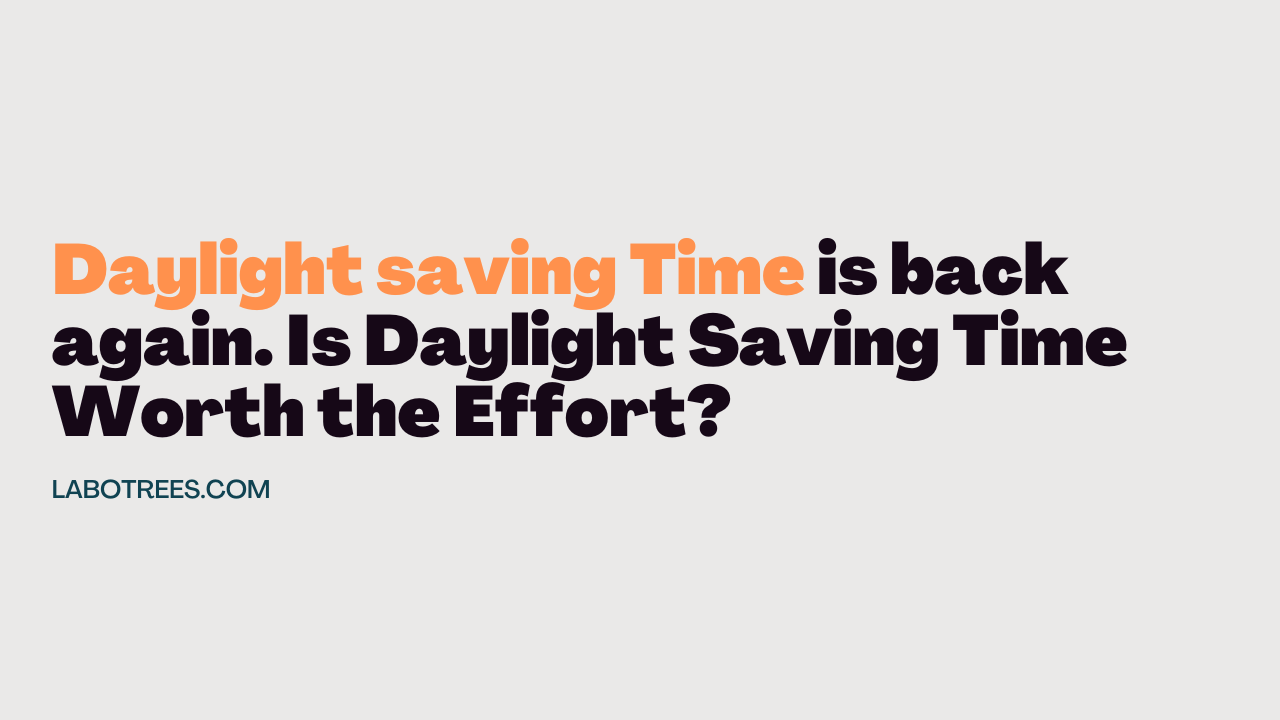Daylight saving Time is back again. Is Daylight Saving Time Worth the Effort?
Canada is all set to move back their clocks on November 6, 2022 and will fall back to standard time. Clocks were jumped forward an hour starting on March 12, 2022 at 2:00AM. It’s hard to adjust to waking up earlier, or being in a dark environment in the evenings. Ontario passed a private members bill earlier in 2020 that extends daylight saving time year-round. The Time Amendment Act amends the Time Act so the new rule will apply to 12 months of the year, instead of having fall and spring DST. But this law yet to implement. This is really odd thing for immigrants where this DST is not implemented. In this blog post you will learn all about Daylight Saving Time
Highlights:
What is Daylight Saving Time?
Daylight Saving Time is a practice that was originally created in early 1900s to help save energy and it is observed in many countries today. The first Daylight Saving Time was introduced by George Hudson, a New Zealand entomologist and botanist, he first time he tried to introduce Daylight Saving Time was in 1895 but he failed to convince people that it would be a good idea. Twenty years later he tried again and this time he succeeded.
Why does Daylight Saving Time exist in the first place?
The idea behind Daylight Saving Time is that by making use of more daylight hours, we can save on energy costs. It occurs when clocks are set one hour ahead of their usual time at the end of Daylight Saving Time.For example, if you turn your clock ahead one hour during the summer months, it will be lighter outside and you will not need as much artificial light indoors. The purpose of this practice is to make better use of natural daylight and reduce the need for artificial lighting, which can be expensive for both households and businesses.
There are two schools of thought on this. One is that daylight saving time was implemented to save energy. The other is that it was implemented to help farmers by giving them an extra hour of light in the evening.
 The one who believes Daylight Saving Time was implemented to save energy believes that since we lose an hour of sunlight, we don’t need as much electricity to light our homes and offices, so the day becomes more efficient in terms of energy consumption. On the other hand, the one who believes Daylight Saving Time was implemented to help farmers thinks it would give them a better chance of getting their work done before dark, which would be beneficial for their productivity and income.
The one who believes Daylight Saving Time was implemented to save energy believes that since we lose an hour of sunlight, we don’t need as much electricity to light our homes and offices, so the day becomes more efficient in terms of energy consumption. On the other hand, the one who believes Daylight Saving Time was implemented to help farmers thinks it would give them a better chance of getting their work done before dark, which would be beneficial for their productivity and income.
In which countries Daylight Savings Time Observed?
Daylight Savings Time is observed in the United States, Canada, Mexico, and some other countries in the Americas. – some countries in Europe, Africa and Asia.The time changes annually on the first Sunday of November at 2:00am local time. However, Daylight Saving Time is not observed in Hawaii or most of Arizona.
What are the Benefits of DST?
The benefits of Daylight Saving Time are numerous, including: saving on energy bills, reducing traffic accidents, and even helping with mental health issues such as depression. It is also believed that Daylight Saving Time reduces crime rates because people are out and about more often, which makes them feel safer in their communities.
What are Disadvantages to DST?
One of the most significant disadvantages is that it does not save energy. In fact, it may even have the opposite effect and increase energy consumption.
The time change can be difficult for people who suffer from seasonal affective disorder or jet lag. There are also studies that show an increased risk in heart attacks and car accidents during the first few weeks after Daylight Saving Time begins.


